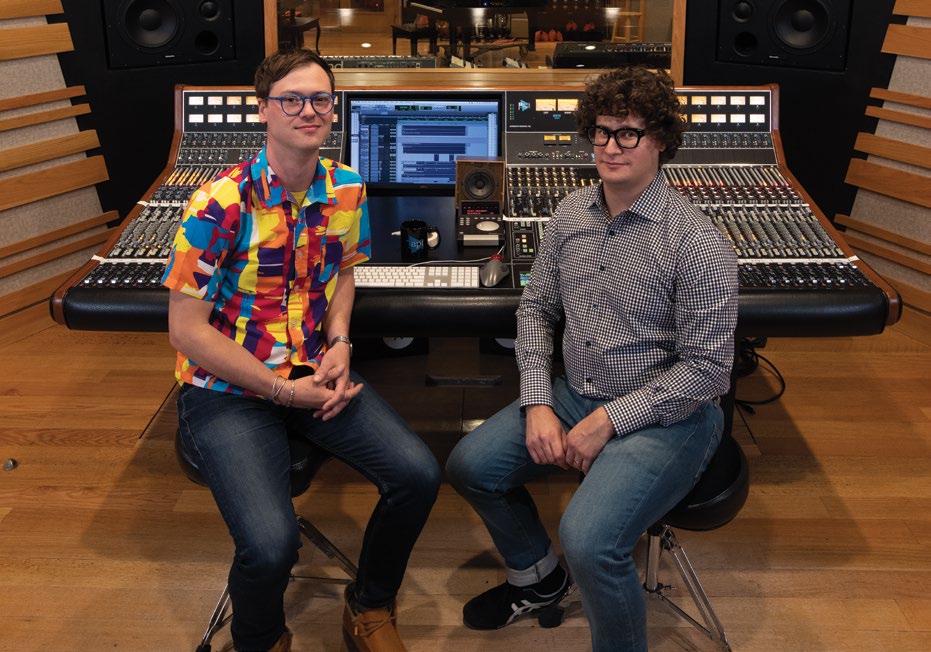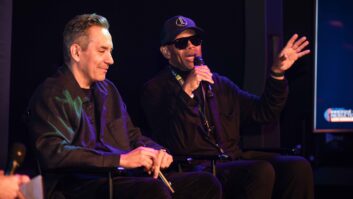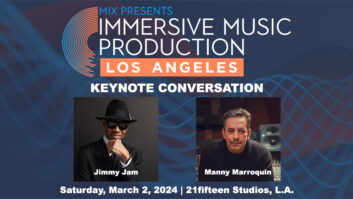
Every major city in America now has its own “Brooklyn.” In the Bay Area, people look at the changes taking place in Oakland and refer to it as Brooklyn. In Los Angeles, the same was said of the Silverlake area, and now East Hollywood. In Chicago, it’s been Lincoln Park, Wicker Park and it’s now moving to the South Side.
It refers to a form of gentrification, common enough throughout history, but the Brooklyn moniker refers to a first wave of artists and hipsters fleeing the newly overpriced city. New restaurants, new venues, new First Friday arts fairs. Third-and fourth-generation families are forced out of long-established neighborhoods by the rising rents; then eventually the first wave of artists is forced out by the condos and cranes and the invasion of tech and finance and investors looking for the “new place to be,” bringing along their $9 coffees and $18 avocado toast for breakfast.
It’s happening everywhere as the suburban dream is slowly being replaced by a return to city life throughout the United States. But it started in Brooklyn. And it showed its effect on the recording industry long before the national magazines picked up on the inner-city migration.

Back in the early 1990s, when Marc Alan Goodman and Daniel Schlett, now partners in Strange Weather studios and pictured on this month’s cover, were still pre-teens and just picking up guitars, the Alesis ADAT debuted, soon followed by ads in The Village Voice for “24-track digital recording, $45/hour, engineer included.”
Then came Pro Tools, Napster and big real estate money in Manhattan, and by the mid-2000s, a few storied big studios started to close, followed by others over the next 10 years. Brooklyn was just over the river and began building on its indie approach and vibe, picking up recording work. The rooms were smaller, and so were the budgets. But there was still a good business.
FROM PHILLY TO BROOKLYN
The first incarnation of Strange Weather was in Philadelphia, circa 2003. Goodman, a recent NYU graduate in music business, realized that he was more entranced by production than distribution, which was the hot topic at the time. He decided to go back to his hometown of Philadelphia, where he found the opportunity to set up a makeshift studio with a friend in an apartment they were renting for $150 a month. Over the next 18 months there would be two more versions of the studio, in similar spaces, before Goodman decided to return to New York and began immersing himself in the studio scene, working all around town before ending up working mostly at Studio G within a Brooklyn facility, moving in his now-large collection of mics and outboard gear. There he would meet engineer/producer Daniel Schlett.

Schlett, a New Jersey native and in his mid-20s, owned Hypersnake Studios but often found himself producing and engineering at Pigeon Club in Hoboken and more and more often in Manhattan. “I first moved to New York about 12 years ago and I met now-famous New York City musician Tony Maimone at a grocery store just on a chance. We were there almost every day, and we ordered the same drink every day.
“He told me that if I ever want to come by, he had a recording studio next door, and Marc had been an assistant there,” he continues. “I kept in touch with him for a couple of years, and when I closed my space in New Jersey I called Tony and said I’m going to move all my gear into Studio G and I’ll work there with you guys. And he said, ‘You know that’s a great idea. But our assistant [Marc Goodman] is going to leave and he wants to start a new studio. Why don’t you call him?’ I said, ‘I don’t fucking know this guy.’” [Laughs]
Goodman and Schlett met, and within a half-hour had decided to embark on a studio venture together. They had seen first hand the decade of changes in New York, and they saw an opportunity to build a single, world-class room, an option that was increasingly rare in Manhattan outside of Sear Sound, Germano Studios, Avatar when available and a few others. While the rest of Brooklyn was zigging toward small and midsized rooms, Goodman and Schlett decided to zag.

“For years I had had other spaces and Daniel had other spaces and then we had a space together,” Goodman says. “They were all rentals and we never wanted to invest heavily into the build-out. Even if you had a good lease in New York, it didn’t mean anything. It was just too scary to do that. So we spent all our money and interest focusing on gear and collecting the stuff we have right here. But then the time came where we realized that the thing that’s holding us back from making the records we want to make them is that we don’t have the right space, the right build-out.”
BIG DECISION #1: BUY THE BUILDING
“I remember exactly the day we were in the basement of our studio base and Marc brought up the idea, saying, ‘I think it’s time for us to move and expand and make this big live room—build a professional studio that New York City doesn’t have anymore.’ And I was like, ‘I think you’re crazy. This basement is amazing. We have an API console and it is the best.’ But Marc really encouraged it, saying that there is a market in New York right now because most of the major studios have closed. Those real tracking spaces where a band can walk in and play all their instruments together, like we couldn’t do at our old studio.”
So, Goodman started looking for properties in Brooklyn, not knowing that he would soon be consumed by two-plus years of negotiations with Department of Buildings, inspections, weather delays and a thousand other obstacles that anyone who has invested in mixed-use space in New York City is all too familiar.

The ordeal is chronicled so well—humorously, realistically and frustratingly—by Goodman in a blog that he did for SonicScoop.com back in 2010-2012 that it would be a shame to try to paraphrase it here. Look it up. Suffice to say, eventually they ended up in a house on Graham Avenue, the edge of Williamsburg, with a ground-floor studio and apartments upstairs. Meanwhile, work continued, and Goodman and Schlett became more comfortable working together, their different skills complementing each other. Goodman moved more toward the business side, having dealt for two years with construction, and Schlett slid into producing and engineering. Their personalities mesh hand-in-glove.
“Eleven years ago, when we first met, we were both young and were both willing to work 90 hours a week, and we both wanted to do every job, wanted to have our hand in every part of the operation,” Goodman recalls. “And over the course of our friendship, we both have kind of figured out what our own roles are and backed off of the other person’s, and we’ve ended up making space for each other. I knew from the beginning that Daniel would become an amazing engineer. But he doesn’t answer emails and he doesn’t know what to do if his computer crashes. [Laughs] So I deal with that.”
DECISION 2: BUILD A SINGLE ROOM

It’s a big decision today of whether to build a single-room facility or a big studio plus secondary space. From a business standpoint, each option has its advantages, each has its concerns.
“We finally had the building, and we said we could have two workable spaces or we could have one great space,” Goodman says. “New York City is full of these kind of mid-sized workable rooms, maybe with a small production room attached to them. Everywhere. So we thought, ‘You know, if we can’t have the room we want, it doesn’t make sense to build rooms at all.’ We wanted to have a space that we knew was right all the time and be able to focus on it. That has allowed us to continue to develop in our own way, like putting in the first API Legacy AXS, or we just bought a new piano yesterday, a Steinway B. We only have the resources to maintain this level of quality because we can focus on a single room.”
DECISION 3: HIRE A REAL STUDIO DESIGNER
The very process of buying the building made Goodman and Schlett realize that their indie DIY days were coming to an end, and that they were entering a new level. Not that their clients or approach would change, simply the business. With building in place and interior walls about to be gutted, they went looking for a real studio designer. They did their due diligence, they knew the right calls to make, and eventually, after Goodman made a mad 13-hour motorcycle dash to Charleston, S.C., to see and hear the new Charleston Sound, they picked the then-relatively unknown Wes Lachot.
“I met with Wes and his wife, Lisa, and we sat down and put a record on and listened for about 30 seconds,” Goodman recalls. “Then I stood up and I sat on the couch for about 20 more seconds. And then I stood up and shook his hand and said, ‘I don’t know what are you doing here, but this is what I’ve been looking for. I’d like you to build me a room. This was a room that I could make good decisions in, where the first decision I make is going to be the right decision. I don’t have to worry about going out and checking the mix in my car.”

Strange Weather opened officially in December 2012, with Dynaudio monitoring, Studer tape machines, Pro Tools, an API 1608 console and racks and racks of esoteric vintage outboard gear and mics. In late 2017, the 1608 was replaced by the first API Legacy AXS. With Goodman focusing more on the business and less on engineering, they hired an engineer, Garret De Block, who Goodman says has proven a life-saver.
After seven years, the studio has seen its packed runs and its dry spells. But life is good right now. A small selection of recent clients includes Steve Gunn, GhostFace Killah, Arto Lindsay, Diiv, Big Yuki, Theo Croker, The War on Drugs, Combo Chimbita, Sophie Auster, Curtis Harding, Sessa and CHAI. Visiting producers and engineers have brought in the likes of D’angelo, No Vacation, GRiZ, Life Of Agony, Nothing and Nels Cline 4, among many others. Projects come in from all over the world. You get the sense that this is home for a long, long while.
“I think it goes back to the whole ethos of the business model in the first place, which is that we want to focus our energy on making the record,” Schlett concludes. “I don’t want to be worrying about whether a camera is in focus while we’re doing this take. I want to make sure that the vocal take is good. I want make sure that the drums take is good. We’re here to be making a record and it’s hopefully going to stand the test of time. That’s what I’m interested in.”






